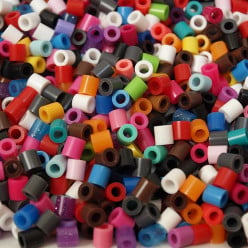What elements make the perfect horror story/novel? How do you make something tru
What elements make the perfect horror story/novel? How do you make something truly scary?
I think that making both the story and the effects seem real would make the story really scary. I have nightmares watching scary movies/reading scary novels so I just don't do that anymore. That was a great question!
I would offer:
1 Read M R James' work;
2. Develop the story fully;
3. Go easy on description;
4. Go easy on gore - in fact minimalise.
5. The essence of 'creepy' is understatement (which brings you back to 1.)
.I think the "unexpected" makes a perfect, or at least good, horror story/novel.
I like Stephen King, and while what he writes is considered more suspense than horror; I like his approach. You "think" you know what's coming next and then he "throws you a curve".
That's what I like/think anyway.For me it is frightening elements in an other wise safe area. Suppose the protagonist is in her safe home, lights have gone out, she is looking around. In the other room an intruder watches her. Her being in her home, thinking she knows what is in every room - yet we the reader can "see" she is not safe is the kind of thing that terrifies me. Also when a character barely makes it out and the bad guy grabs an ankle and she just gets away. Or barely makes it into the house or car while being chased. At least in movies that really gets me.
A great horror story ends with a twist. When you get to the end, you feel relief because the hero is safe or the bad guy has been killed or whatever...Then, just as you finish, feeling content, something scary ends it, leaving you feeling uneasy and scared even though the story is finished.
the thing that causes most people true fear is the unknown. lead the reader on through small bits of information. you may KNOW who your killer is (or what) but keep the reader guessing. and try hard to make it difficult for them to guess the truth. i know i love a story that proves me wrong when i think i know "who dunnit". a twist at the end can be good, especially if you plan on continuing in a second book. personally i dont like some of the twists i come across, they leave me feeling unfinished, unsatisfied. i like closure. in "the deed of paksenarrion" my favorite part was when they were in a battle, and no matter how they fought, they were losing because the enemy was both to powerful and to many. at the last minute, they were joined by an unexpected ally. i actually cheered out loud with pleasure because i was sure they were going to lose. again, in the same book, paksenarrion was tortured and brainwashed and sent out believing she was killing the enemy when in reality she was set upon her friends. i was very fearful in that situation. would they stop her in time or would they not recognize her and attack her. a very well written story draws you in so you get caught up in the action and what is happening. you forget it is a book and stop analysing what will happen. you are taken along with the characters and learn things as they do and when they do.
tell about your characters so the reader comes to identify with and empathize with them in all their struggles. make a good guy bad or a bad guy good.
hope this helps.I think the element of fear is caused when there is the element of an unknown detail, person, or act. Or, it can be a facial expression...remember Jack Nicholson in "The Shining" with those big eyes and raised eyebrows?
One way is to represent a person or being as representing perfect, flawless evil. Here's some examples in my opinion:
H. P. Lovecraft's Cthulhu. Lovecraft made the hair on the back of my neck stand on end when he described this being as having a degree of malevolence "not to be found in this galaxy".
Another example was the shark in the movie Jaws. The movie and it's background theme have long passed into humorous references, but when I first saw the movie, it's portrayal of the shark as encapsulating pure, relentless violence really creeped me out.
Also, another movie that really scared the daylights out of me when I first saw it was Alien - the alien creature was represented in the same way.This is a great question...and one I have actually debated with some close friends of mine (all of whom are film junkies). I draw attention to movies when it comes to this question. For me, what made films like "The Thing" truly scary was that it left the audience with very little information. Having the creature's origin briefly hinted at and shrouded in mystery gave the creature more scare factor.
The mysterious and the unknown are always scary, so naturally when the frightening thing is explained, its immediately void of producing fear.Adding elements of common knowledge can make a horror story or novel more scary.
no blood is required ... it's all a mental game ... the fear of the unknown. leave the person guessing and in the end the negative character should win.
Dark corners and crooked shadows that shape into subtle faces and hands... Oh my... Setting + rich language + suspense = equals chills up the spine!
The imaginagtion is more powerful than the reality...Hitchcock was the master of this technique/story device....the unimagintive slasher flicks that mistake gore for content & border on the peverse don't even deserve to share the same genre as Alfred Hitchcock.
Related Discussions
- 13
Do you have a favorite ghost or horror story you like to re-read during the Hall
by Beth Perry 9 years ago
Do you have a favorite ghost or horror story you like to re-read during the Halloween season?And what is it?
- 42
watching scary movie... what can stop it being scary?
by salt 13 years ago
Im not good at scary movies...
- 28
What is the scariest movie you have ever watched?
by Beth Perry 8 years ago
What is the scariest movie you have ever watched?And what about the film gave you goose bumps?
- 6
Who is your favorite horror writer and your favorite scary story?
by Michelle Taylor 11 years ago
Who is your favorite horror writer and your favorite scary story?
- 3
What inspires you to write your most scariest and blood curdling horror story?
by Grace Marguerite Williams 11 years ago
What inspires you to write your most scariest and blood curdling horror story?
- 16
Can you write a horror story using only one sentence?
by Ryan 6 years ago
Can you write a horror story using only one sentence?




















